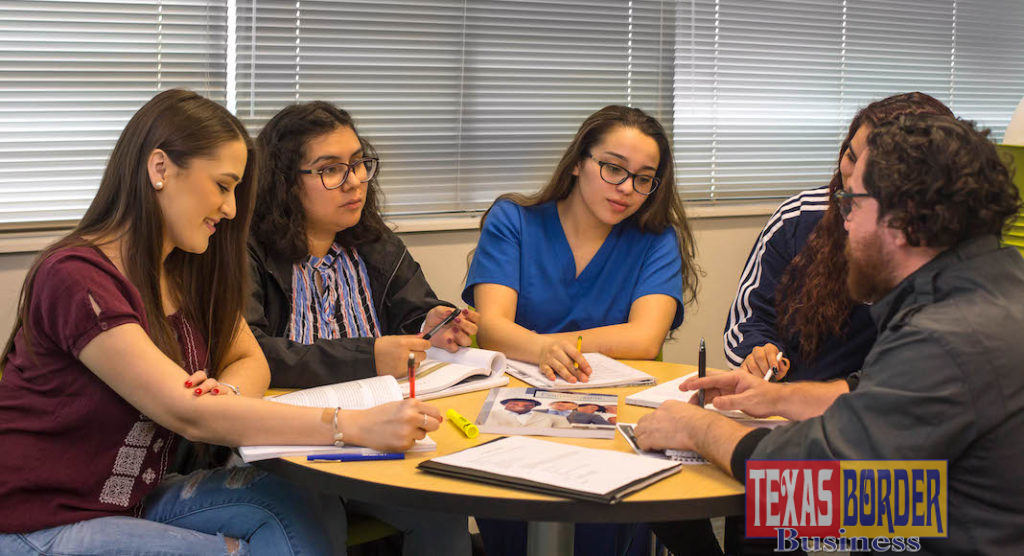Introducing STC’s New Quality Enhancement Plan

Texas Border Business
McAllen, TEXAS – When it comes to a college’s persistence and graduation rate, defined as the prevalence of students who either graduate or return the following term, South Texas College has earned itself an “A-plus.”
Currently, STC boasts an outstanding persistence rate of 61.5 percent, meaning that more than three in five students who begin in one semester enroll for the next semester.
“In terms of graduation rates, we’re above the state average, and we do get lauded for that,” says Dr. Fernando Chapa, dean of institutional research and effectiveness.
“But at STC, there’s always room for improvement,” adds Dr. Chapa, who hopes to boost the South Texas College persistence rate to 70 percent over the next five years. “We want to make sure that we’re not losing students.”
The daring resolution comes after the college took a “deep dive” into its data, according to Dr. Chapa. “We looked at things like our graduation rates, our persistence rates — which students are successful and which are not doing so well.”
Three focus groups, recruited from each of the college’s campuses, asked students to identify factors that were contributing to their success in college, as well as opportunities for improved guidance and support.
The survey’s big reveal? That connection is key. According to Director of Comprehensive Advisement and Mentoring Services Dr. Nancy Garcia, it’s a sense of connection to the college that inspires many students to persist.
“Those students who connect with someone, whether it’s an advisor or a faculty member, tend to be more successful,” says Dr. Garcia.
According to the administrator, South Texas College’s student population has unique challenges, and it is essential to build a system in which advisors can easily connect students to the vital resources available. That’s why advising is the top priority for the school’s growing Quality Enhancement Plan (QEP), a five-year plan intended to aid retention and boost student success.
“Persistence is the number-one goal,” Dr. Garcia says about the program, which introduces mandatory advising as part of the first-year college experience. “We want to come up with learning outcomes where students learn how to use services and navigate college processes to help themselves.”
Providing a Map to Success
To that end, the advising department has “mapped out” everything that a first-year student needs to know. “We’re calling it ‘My Advising Plan: MAP,’” says Dr. Garcia. To register for classes, students must first sit down with an advisor and set up an educational plan. By linking students with professional academic advisors, the college can provide crucial guidance to students beginning their higher education journeys.
“We want to make sure that students have all of the information, so that they get on the right pathway from the beginning, and that they’re only taking classes within a career pathway,” says Dr. Garcia.
“Hopefully, that MAP will solidify in their heads as soon as students get on campus,” agrees Dr. Chapa. “They will know what they need to complete their degree, and then also what they’ll do with their degree after they leave. If they can visualize that end goal very clearly, then they can work diligently to chip away at it and achieve.”
The process is simple, yet bold. First, students will participate in an enrollment orientation, where they will set up their Starfish profiles to easily connect with faculty and administrators for support. They also will learn how to use DegreeWorks, an online program where students track their educational process toward their goals.
Additionally, the enrollment orientation will ensure that students complete their financial aid — a critical piece, according to Dr. Garcia.
“We can advise students ‘til we’re blue in the face,” she says. “But if they don’t do the other pieces like financial aid, they are still not going to persist.”
Another crucial component of the orientation will be training in Career Coach, a career assessment tool that can help point students to their ultimate goals. “It will validate what they’re studying,” says Dr. Garcia, “or if they’re undecided, it will help narrow down the career path they want to pursue.”
After the introductory orientation, students will have a firm foundation to perform the next critical steps: meeting with their academic advisers, creating a solid MAP, and enrolling in the classes most relevant to their goals.
“It’s a package deal,” says Dr. Garcia. “We’re providing them all of these services to guide, persist, and help them succeed.”
The proactive, individualized support continues with a case management approach, where advisors monitor and meet with students throughout the year. Advisors use these “check-ins” to reiterate the importance of attending class, and to encourage use of student services. As Dr. Garcia says: “Don’t wait until you get in trouble in class before you visit the tutoring center.”
In October, the plan is for advisors to motivate students to think ahead and register early for spring classes. Toward the end of the semester, advisors will remind students to study for finals and double-check that they are registered for the next semester. In the spring semester, the whole communication process repeats itself.
Enhancing Campus Culture
“What we’re trying to do is create a college-going campus culture,” relates Dr. Garcia. Many students do not have role models when it comes to earning their degrees, she says, which is why advising is so crucial. And when it comes to something as important as student success, it’s essential to be very detailed and start with the basics — even with something as simple as scheduling.
“Just because you have classes on Tuesdays and Thursdays doesn’t mean that you forget about college the rest of the week,” says Dr. Garcia, giving a common example. “Students need to put in at least two hours for every three credits. So that’s where we want to educate our students.”
The goal is to have mandatory advisement in place for next fall, as the Quality Enhancement Plan continues to develop.“At the end of this spring, we hope to have everything finalized and have all the details in place,” says Dr. Chapa.
At that time, further goals for student success throughout the five-year plan are expected to be set, as more research into student persistence habits is done.
Not only does it produce useful insights, but according to the dean, it also helps to empower students to “decide their own fate.”
Dr. Chapa acknowledges the “group effort” involved in the undertaking to launch the QEP and first-year advising, and is proud of the college’s decision to stress cross-functional dialogue and support. He saysthey made sure they had representation from across the college to give their input on how they should design the program.
Now, countless hours of planning and collaboration are coming to fruition, and will soon be ready to take student success to the next level.
“I’m anxious to see it grow,” says Dr. Chapa. “And I’m excited to see it all come together.”












